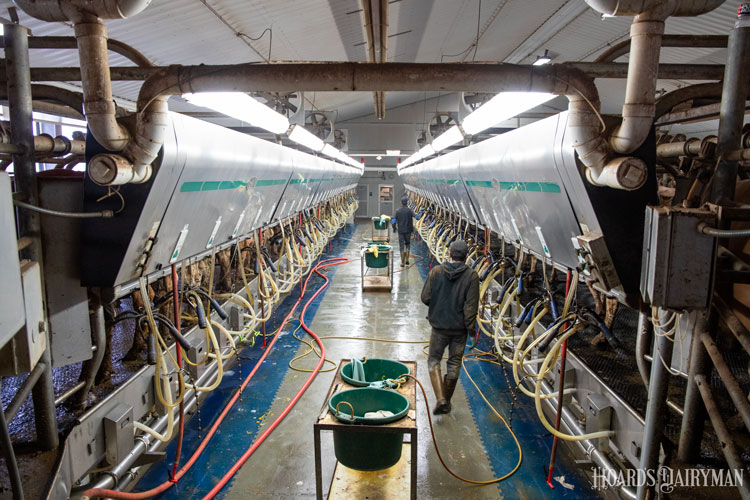
Last year was one that will stick out in dairy producers’ minds, but not in a positive way in terms of milk prices and income over feed costs. Although current milk prices may make us question what this year will bring, perhaps there are brighter days ahead.
“We are starting to see the adjustments taking place that will make for a better 2024 in a lot of different ways,” said Chuck Nicholson, an associate professor at the University of Wisconsin-Madison. He gave a dairy industry update at the recent Agricultural Outlook Forum.
Nicholson said one factor influencing change is that the number of milk cows in the top 24 producing states is trending downward. “This is part of that long-term adjustment process,” he noted.
Meanwhile, milk per cow has been steady, although component production continues to climb. Nicholson pointed out significant increases in milkfat production over the last 10 years.
He said we are seeing positive signs in terms of exports, with prices for U.S. products becoming more competitive with other suppliers in the marketplace. “That is a favorable position we were not in in 2023,” he noted. In terms of exchange rate, he said it is somewhat of a mixed story, but the U.S. dollar is moving to more favorable ground with some of our major dairy customers, which helps.
Nicholson also shared a graph of the dairy price cycle and noted the major shifts we have seen over the years. When looking at the past three cycles, if history repeats itself, we are likely past the trough of the current price cycle, he said.
The dairy industry within our country’s borders is impacted by what happens outside our borders. Nicholson said we are seeing dairy processing investments globally, plus global milk production overall is down, along with global milk prices. “These are all good things for the 2024 storyline,” he said.
One element that is less favorable, he noted, is feed prices. Projections show prices above the long-term average for ration value.
There are a few other wild cards for 2024. One is uncertainty in the global economy. This includes demand for dairy, high interest rates, and continued inflation.
Nicholson said weather conditions caused by El Niño, such as extreme heat or precipitation, are another wild card. Such weather events affect more than just the United States or the dairy industry and could tighten feed supplies.
Finally, he mentioned some uncertainty in dairy policy. The federal milk marketing order updates are still in the air, along with a new farm bill, which Nicholson said might not be finished in this calendar year.
As a prediction for 2024, USDA is projecting the margin of the All-Milk price over the ration value to be right at the 10-year average.
“We should see higher milk prices than the lows of 2023 based on price cycle analysis and price forecast,” he said, “but feed costs above long-term averages will be a bit of a challenge for long-term profitability.”









